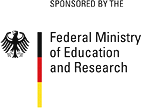Protein from the Sea: The Industrialization of Southeast Pacific Fisheries and the Global Rise of Fishmeal (1945-1973)
By the early 1970s, Peru and Chile had become the epicenter of a spectacular fisheries boom. Their success was based on the immense schools of anchovies, sardines, and mackerel that thrived in the nutrient-rich waters of the Humboldt current, flowing northward along the South American Pacific Coast. These emerging fishing nations were among the first recipients of aid from the newly-founded U.N. Food and Agricultural Organization (FAO), where experts believed that fish could solve the formidable problem of world hunger. Yet the growing consumer preference for “white” meat in the global North also compelled industrialists to engineer ever-cheaper chickens and hogs, whose specially formulated feeds depended upon fish meal made overwhelmingly from the small pelagic fishes of the Southeast Pacific. In recent decades aquaculture (fish farming) has also become a principal source of demand for fish meal and its byproduct, fish oil.
Fish meal is thus a key commodity through which to analyze the inequalities surrounding the trade of natural resources in the global marketplace. My work at desiguALdades.net examines how the transformation of fish meal into a lucrative export commodity after World War II eventually sidelined debates over malnutrition in the developing world. This research forms part of my larger dissertation project, which explores the transnational environmental history of industrial fisheries in the Southeast Pacific, as Peru and Chile — the world’s top two fish meal producers — have grappled with ecological limits and powerful interest groups within a shifting international political, socio-economic, and legal landscape since the 1950s.
